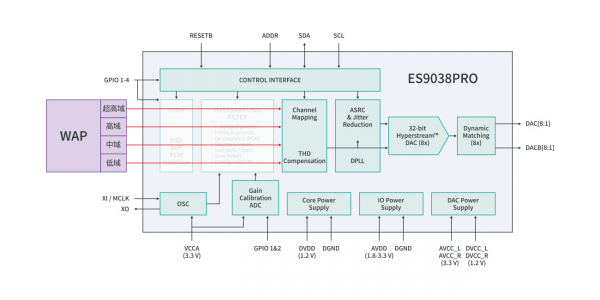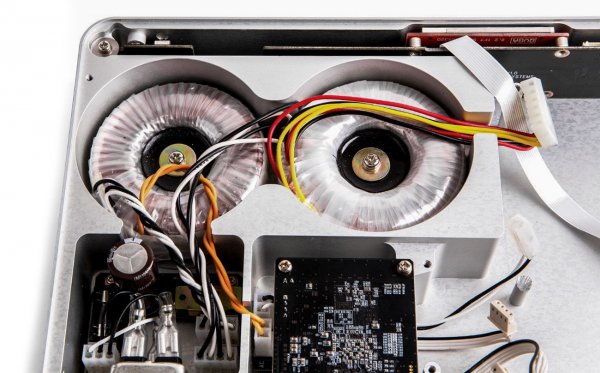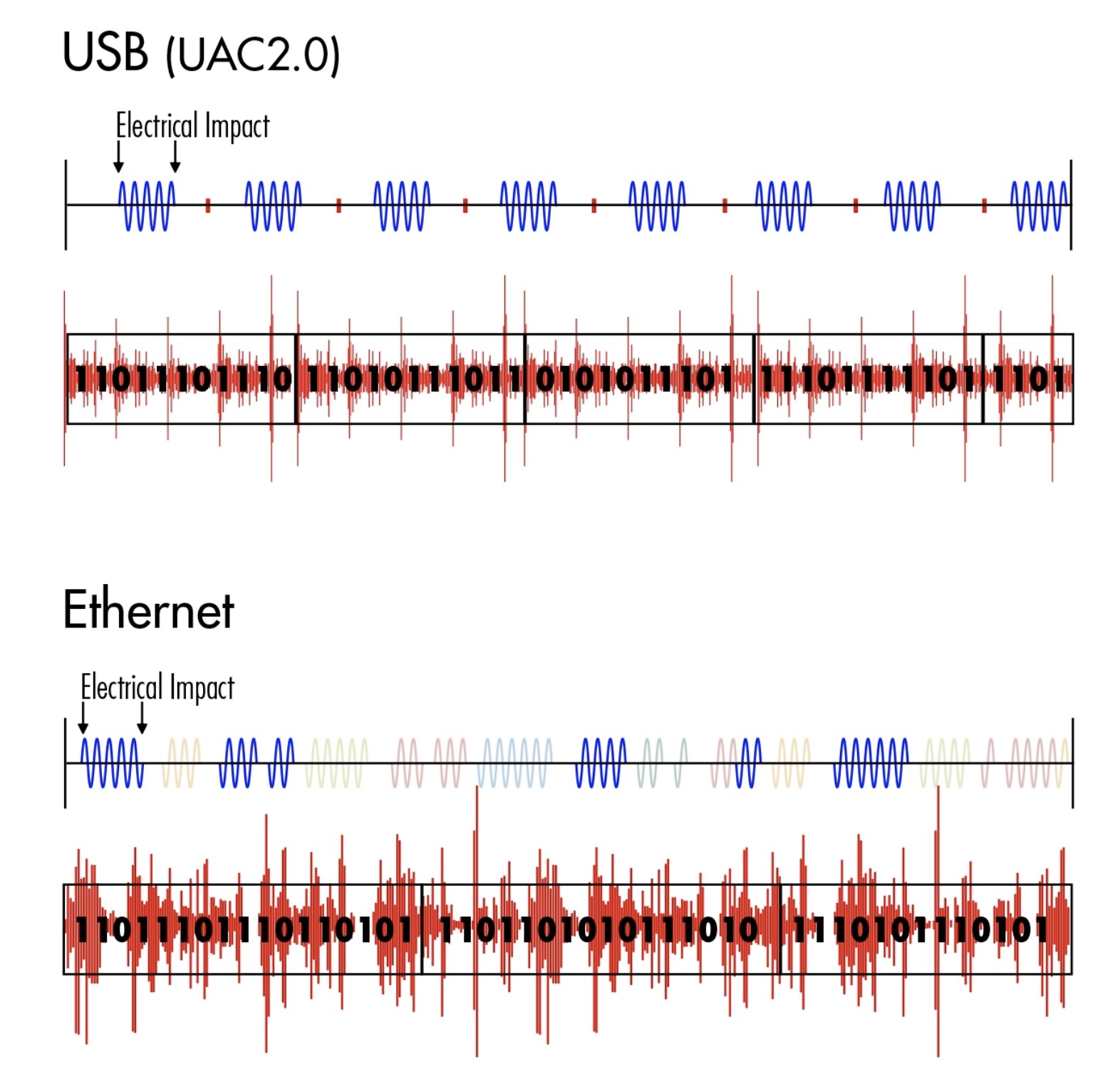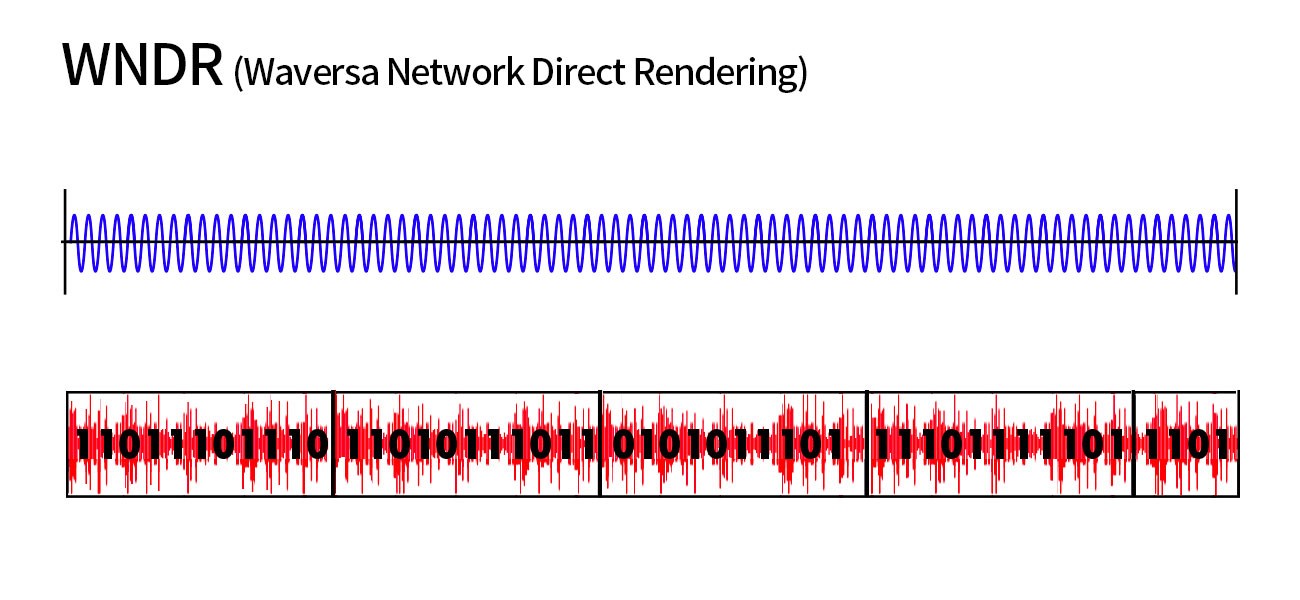Over the years I have become very familiar with the Waversa product line and have auditioned or owned most of their equipment at one time. Their approach to digital audio in unique and I have enjoyed watching this technology evolve. One challenge I enjoy is tying quality with affordability and Waversa may have done just this with their new sub-$5000 DAC, the DAC3c (compact). The article below was originally written in Japanese and pulled from the Waversa dealer for most of Asia. www.waversasystems.com. To my understanding, this is a private dealer representing Waversa, which is based in South Korea. With the help of Google translate and further editing including my experience with this dac and their product line, I am re-publishing this summary. If anyone knows of another DAC manufacturer with a similar approach, I would be very interested in learning about them.
Please Note this is not intended to be promotional with the intention for sales. Instead, informational only and learn if other manufacturers also have a similar or unique approach to digital processing.
A different approach to digital processing unique to Waversa and why:
Generally, upsampling uses an FIR filter (Finite Impulse Response, fixed-form impulse response filter). Interpolation (interpolation) is performed during the upsampling process to correct the sound quality. FIR Interpolation is a mathematical calculation that estimates and fills between digital points.
In the case of the Saber ES90x8 series, such FIR filters are basically built-in, and DAC manufacturers can easily perform upsampling. However, in the case of incorrectly made upsampling, the sound becomes thinner, and it is often proved that listening with the upsampling function turned off sounds better.
WaversaSystems uses a proprietary WAP instead of the basic FIR filter included in the DA chip. Waversa Audio Processor (WAP) is designed inhouse with a multi-stage structure including a number of proprietary FIR filters and IIR filters (Infinite Impulse Response Filter) and performs high-resolution upsampling. This high-resolution upsampled signal is processed through thousands of iterative calculations using state-of-the-art source estimation algorithms to reduce digital errors and create a waveform that is as identical as possible to the original analog signal. This is the role of WAP.
WAP (Waversa Audio Processor)
The software processing method has elements that cause errors because the processing is sequential and complicated. On the other hand, in the hardware processing method, since signal processing is performed once at the same time, there is no room for jitter, and the timing of the audio signal is exactly the same.
WaversaSystems digital processors are processed in hardware, not software-based digital processing, so they are processed simultaneously in a simple, optimized path resulting in fewer errors, and the timing of the audio signal is handled more accurately.
Modular design vs. proprietary signal path system:
Most DAC manufacturers produce modularized DAC components individually arranged and combined allowing for ease of development and production with easy with off-the-shelf chips. As a result, only a few DAC manufacturers have their own signal systems, and DACs of those brands are priced at more than $10,000. WDAC3C is a signal path system specification originally developed by WaversaSystems. All signal processing has been optimized, including a proprietary USB input circuit, network renderer, digital processor and DAC, and is controlled and operated precisely by a clock system unified by a digital processor (WAP). This method has a lower error probability, higher stability, and ideal digital signal processing than the method of circuit design using commercially available modules.
Dual WAP captures all signals In order to dramatically increase processing speed and efficiently manage signal processing. The first WAP (P1) processes all input signals, and the second WAP (P2) receives signals processed by P1 on I2S and decodes signals with clocks according to sampling rates. In this way, by assigning a unique role to each digital processor, signal interference is minimized, more sophisticated clock management is performed, and sound quality benefits from accurate signals that do not compromise digital signal integrity. The heart of WAP lies in signal restoration. 32Bit 1.5 MHz, processing huge information
The WDAC3C does not use the FIR built into the general ES9038, but uses multiple stages of FIR with proprietary logic to perform high-resolution upsampling. Instead, the heart of the technology is included in WAP, and the newly developed WAP has greatly increased the amount of data that can be processed. This new WAP has succeeded its predecessor (24Bit / 368kHz) with 32Bit 1.5MHz data processing. In comparison,16Bit, 65,532 digital signal processes are performed, and in 32Bit, there are 4 billion digital signal processes, and the sophistication of signal processing is dramatically increased. This has made it possible to generate digital signals that are closer to analog, and the subsequent digital restoration technology has become more accurate.
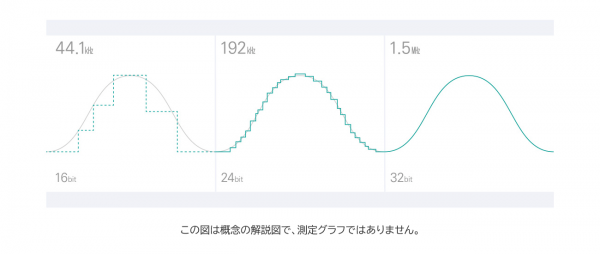
To put it simply, the improved internal processing speed of 32Bit 1.5MHz is similar to upgrading from DVD quality to 4K quality. This dramatically increases the detail and dynamic range that can be expressed.
WAP sounds more natural as you step up WAP's signal restoration algorithm technology increases in sophistication as the numerical value of the calculation accuracy increases. This is managed by WAP Level. WDAC1 has one stage of WAP, WDAC2 has three stages, WDAC3 has five stages, and WDAC3C has nine stages. This WAP is a computation that is processed at the digital stage and can be upgraded by connecting devices.
WCORE and WRouter are WAP level 3, yet when connected to WDAC3C with WAP level 9, a synergistic effect results and the WAP level is measured at 15. The higher the WAP level, the more sophisticated the processing per unit time, and the better the sound image and detail. And the tone of the instruments is also flexible, natural and easy to hear.
In designing and developing a DAC, there are several components that affect sound quality. Several factors, such as the design of the input / output lines, the design of the internal algorithm of the digital processing chip, and the performance of the DA chip, the design of the power supply unit and the design of the analog output unit are directly related to the completeness of the DAC.
ES9038PRO is a flagship model consisting of 8 channels that features 32-bit processing and ESS patented 32-bit HyperStream DAC technology. The HyperStream architecture has excellent sound quality and very low intermodulation distortion characteristics and has superior audio characteristics compared to general competitors using the delta-sigma architecture.
Digital processing of WDAC3C:
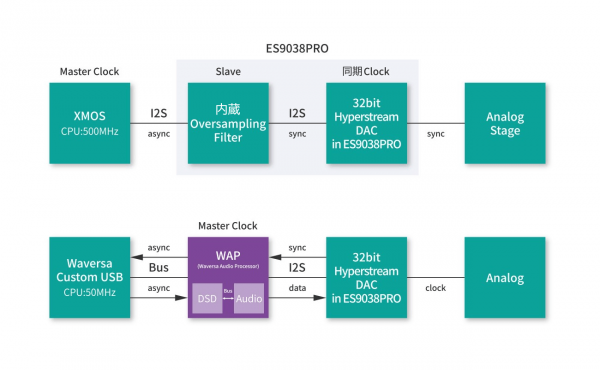
The performance of the DAC chip is also very important for the DAC, but it is not the only one. If DA chip performance is important, all DACs with the same DA chip should sound the same. The choice of a DAC chip is important, but the consequences will depend entirely on how the DAC chip is used. The WDAC3C uses only the most basic functions by bypassing the ES9038PRO and achieves excellent sound quality through original and unique designs for both the input and output sections. Two of them are WAP and WMLET.
WDAC3C has introduced two unique technologies from WaversaSystems to make optimal use of the ES9038PRO with a 32-bit 8-channel DAC.
One is WAP, a source estimation algorithm that operates at 32Bit 1.5MHz. The other is Range Separation Technology (WMLET).
(For WMLET and further discussion, see Part 2.)
Please Note this is not intended to be promotional with the intention for sales. Instead, informational only and learn if other manufacturers also have a similar or unique approach to digital processing.
A different approach to digital processing unique to Waversa and why:
Generally, upsampling uses an FIR filter (Finite Impulse Response, fixed-form impulse response filter). Interpolation (interpolation) is performed during the upsampling process to correct the sound quality. FIR Interpolation is a mathematical calculation that estimates and fills between digital points.
In the case of the Saber ES90x8 series, such FIR filters are basically built-in, and DAC manufacturers can easily perform upsampling. However, in the case of incorrectly made upsampling, the sound becomes thinner, and it is often proved that listening with the upsampling function turned off sounds better.
WaversaSystems uses a proprietary WAP instead of the basic FIR filter included in the DA chip. Waversa Audio Processor (WAP) is designed inhouse with a multi-stage structure including a number of proprietary FIR filters and IIR filters (Infinite Impulse Response Filter) and performs high-resolution upsampling. This high-resolution upsampled signal is processed through thousands of iterative calculations using state-of-the-art source estimation algorithms to reduce digital errors and create a waveform that is as identical as possible to the original analog signal. This is the role of WAP.
WAP (Waversa Audio Processor)
- Hardware method with very low jitter rate and accurate timing
- Proprietary solution from digital input to processor
- Dual WAP captures all signals on the optimized route
- Centralized clock management in the signal path
- Technology to minimize Quantization Error
- Processes huge information up to 32Bit 1.5MHz
- Highest level signal restoration algorithm by applying medical technology
The software processing method has elements that cause errors because the processing is sequential and complicated. On the other hand, in the hardware processing method, since signal processing is performed once at the same time, there is no room for jitter, and the timing of the audio signal is exactly the same.
WaversaSystems digital processors are processed in hardware, not software-based digital processing, so they are processed simultaneously in a simple, optimized path resulting in fewer errors, and the timing of the audio signal is handled more accurately.
Modular design vs. proprietary signal path system:
Most DAC manufacturers produce modularized DAC components individually arranged and combined allowing for ease of development and production with easy with off-the-shelf chips. As a result, only a few DAC manufacturers have their own signal systems, and DACs of those brands are priced at more than $10,000. WDAC3C is a signal path system specification originally developed by WaversaSystems. All signal processing has been optimized, including a proprietary USB input circuit, network renderer, digital processor and DAC, and is controlled and operated precisely by a clock system unified by a digital processor (WAP). This method has a lower error probability, higher stability, and ideal digital signal processing than the method of circuit design using commercially available modules.
Dual WAP captures all signals In order to dramatically increase processing speed and efficiently manage signal processing. The first WAP (P1) processes all input signals, and the second WAP (P2) receives signals processed by P1 on I2S and decodes signals with clocks according to sampling rates. In this way, by assigning a unique role to each digital processor, signal interference is minimized, more sophisticated clock management is performed, and sound quality benefits from accurate signals that do not compromise digital signal integrity. The heart of WAP lies in signal restoration. 32Bit 1.5 MHz, processing huge information
The WDAC3C does not use the FIR built into the general ES9038, but uses multiple stages of FIR with proprietary logic to perform high-resolution upsampling. Instead, the heart of the technology is included in WAP, and the newly developed WAP has greatly increased the amount of data that can be processed. This new WAP has succeeded its predecessor (24Bit / 368kHz) with 32Bit 1.5MHz data processing. In comparison,16Bit, 65,532 digital signal processes are performed, and in 32Bit, there are 4 billion digital signal processes, and the sophistication of signal processing is dramatically increased. This has made it possible to generate digital signals that are closer to analog, and the subsequent digital restoration technology has become more accurate.

To put it simply, the improved internal processing speed of 32Bit 1.5MHz is similar to upgrading from DVD quality to 4K quality. This dramatically increases the detail and dynamic range that can be expressed.
WAP sounds more natural as you step up WAP's signal restoration algorithm technology increases in sophistication as the numerical value of the calculation accuracy increases. This is managed by WAP Level. WDAC1 has one stage of WAP, WDAC2 has three stages, WDAC3 has five stages, and WDAC3C has nine stages. This WAP is a computation that is processed at the digital stage and can be upgraded by connecting devices.
WCORE and WRouter are WAP level 3, yet when connected to WDAC3C with WAP level 9, a synergistic effect results and the WAP level is measured at 15. The higher the WAP level, the more sophisticated the processing per unit time, and the better the sound image and detail. And the tone of the instruments is also flexible, natural and easy to hear.
In designing and developing a DAC, there are several components that affect sound quality. Several factors, such as the design of the input / output lines, the design of the internal algorithm of the digital processing chip, and the performance of the DA chip, the design of the power supply unit and the design of the analog output unit are directly related to the completeness of the DAC.
ES9038PRO is a flagship model consisting of 8 channels that features 32-bit processing and ESS patented 32-bit HyperStream DAC technology. The HyperStream architecture has excellent sound quality and very low intermodulation distortion characteristics and has superior audio characteristics compared to general competitors using the delta-sigma architecture.
Digital processing of WDAC3C:

The performance of the DAC chip is also very important for the DAC, but it is not the only one. If DA chip performance is important, all DACs with the same DA chip should sound the same. The choice of a DAC chip is important, but the consequences will depend entirely on how the DAC chip is used. The WDAC3C uses only the most basic functions by bypassing the ES9038PRO and achieves excellent sound quality through original and unique designs for both the input and output sections. Two of them are WAP and WMLET.
WDAC3C has introduced two unique technologies from WaversaSystems to make optimal use of the ES9038PRO with a 32-bit 8-channel DAC.
One is WAP, a source estimation algorithm that operates at 32Bit 1.5MHz. The other is Range Separation Technology (WMLET).
(For WMLET and further discussion, see Part 2.)
Attachments
Last edited:











